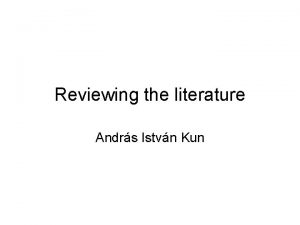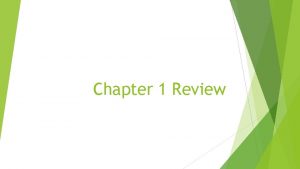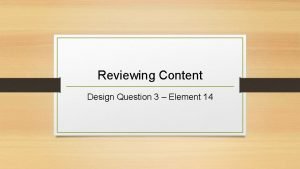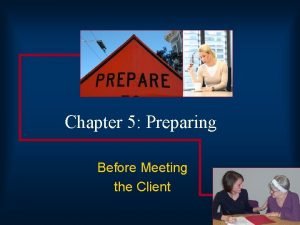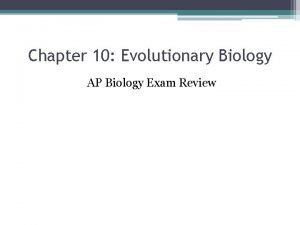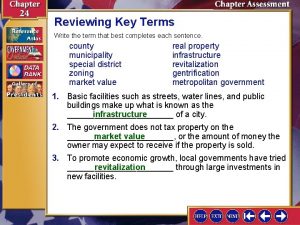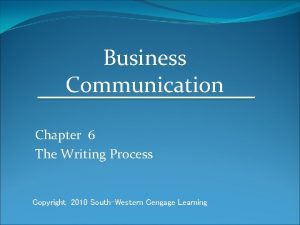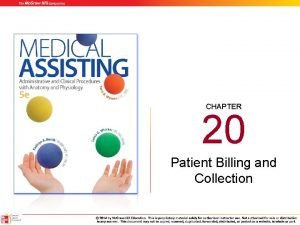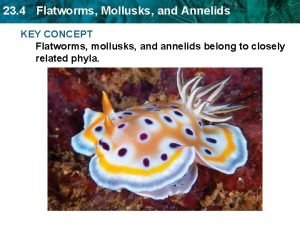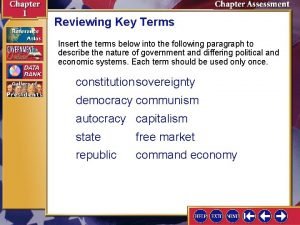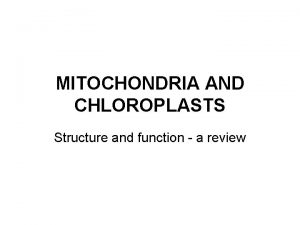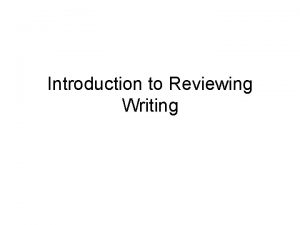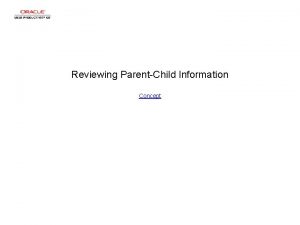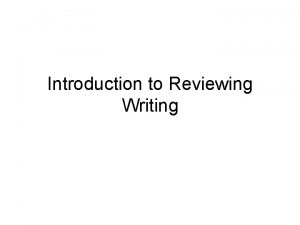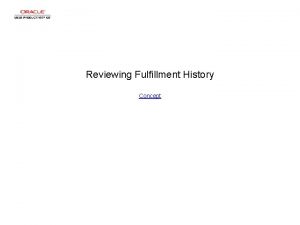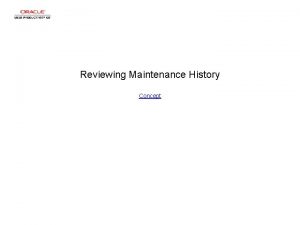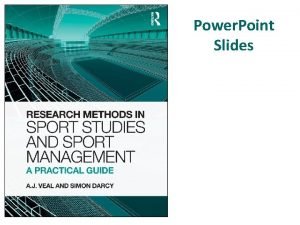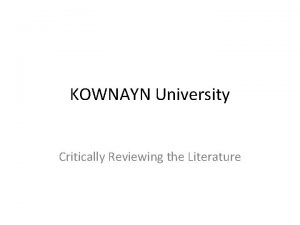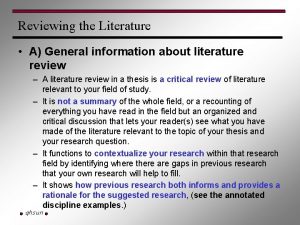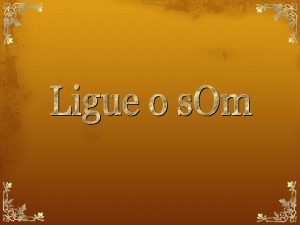Chapter 4 Reviewing the Literature Power Point Slides


















- Slides: 18

Chapter 4 Reviewing the Literature Power Point Slides by Ronald J. Shope in collaboration with John W. Creswell

Key Concepts • Defining a literature review • Distinguishing between a quantitative and qualitative literature review • Understanding the 5 -step process of conducting a literature review Educational Research 2 e: Creswell

What is a Literature Review? • Written summary of the literature • Describes past and current information and research • Organized into topics • Reporting the literature based on themes or individual studies • Documenting a need for your proposed study Educational Research 2 e: Creswell

Literature Review in a Quantitative Study • Documents the importance of the research problem at the beginning of the study • Supports theory or explanation used in the study • Foreshadows the research questions • Provides an explanation for the results in other studies and in theoretical prediction at the end of the study. Educational Research 2 e: Creswell

Literature Review in a Qualitative Study • Documents the importance of the research problem at the beginning of the study • Does not foreshadow the research questions (which are broad in scope to encourage participants to provide their own views) • Is used to compare and contrast with other studies at the end of the study Educational Research 2 e: Creswell

What is the Process of Conducting a Literature Review? • • • Identify key terms Locate literature Critically evaluate and select the literature Organize the literature Write a review Educational Research 2 e: Creswell

Identifying key terms • Write a preliminary “working title” for the project and select two or three key words that capture the essence of the project • Pose a short general research question that you would like to answer in the study • Look in a thesaurus of terms to find words that match your topic • Scan the contents in your library stacks and the table of contents of educational journals Educational Research 2 e: Creswell

Priority/Value of Sources for Searching the Literature • Summaries • Journals, Indexes, Databases • Early stage literature (e. g. , Web studies) Educational Research 2 e: Creswell

Databases Used in Educational Research • • • ERIC Psy. INFO Sociofile Social Science Citation Index Dissertation Abstracts Others: Pub. Med Educational Research 2 e: Creswell

Critically Evaluate and Select the Literature • Is it a good, accurate source? – National journal? – Reviewed source? – Research study? Educational Research 2 e: Creswell

Critically Evaluate and Select the Literature • Is the source worthy of inclusion? – Topic relevance: Is the literature on the same topic as your proposed study? – Individual and site relevance: Does the literature examine the same individuals and sites you want to study? – Problem relevance: Does the literature examine the same research problem as you propose in your study? – Accessibility relevance: Is the literature available in your library or can it be downloaded from a web site? Educational Research 2 e: Creswell

Organize the Literature: Abstracting Studies • Contents of abstract vary for research study and essay • Structure essentially same for quantitative and qualitative research studies: – Research problem – Research questions/hypotheses – Data collection procedures – Results/Findings Educational Research 2 e: Creswell

Sample Hierarchical Literature Map Study Abroad Programs Attitude Toward Study Abroad King, Young, 1994 The need for Teaching Programs to be Culturally Responsive Bennett, 1995; Eastman, Smith, 1991; Grant 1994; Noel, 1995 U. S. Programs Personal insights of Preservice Teachers Possible Improvements Personal insights of Preservice Teachers Friesen, Kang Mc. Dougall, 1995; Mahan, Stachowski, 1991 Martin, Rohrlich , 1991; Stachowski, 1991 Cockrell, Placier, Cockrell, Middleton 1999; Goodwin, 1997; Kea, Bacon, 1999 Predominately English Speaking Countries Mahan, Stachowski, 1990; Quinn, Barr, Mc. Kay, Jarchow, Powell, 1995; Vall, Tennison, 1992 Need for further study: Non-English Speaking Cultures Conventional Programs Question: Do short-term study abroad programs in non-English speaking cultures help create cultural responsiveness in preservice teachers? Colville-Hall Macdonald, Smollen, 1995; Rodriguez, Sjostrom, 1995; Vavrus, 1994 Educational Research 2 e: Creswell Cross-Cultural Programs Cooper, Beare Thorman, 1990; Larke, Wiseman, Bradley, 1990

Organize the Literature: Constructing a Literature Map • Identify key terms for the topic and put them at the top of the map • Sort studies into topical areas or “families of studies. ” • Provide a label for each box which will become a heading for the review • Develop the map on as many levels as possible Educational Research 2 e: Creswell

Constructing a Literature Map • Draw a box toward the bottom of the figure that says “my proposed study” • Draw lines connecting the proposed study with other branches of the literature Educational Research 2 e: Creswell

Circular Literature Map Need for Further Study Non-English Speaking Cultures Question: “Do short term study abroad programs in non-English speaking cultures help create cultural responsiveness in preservice teachers? Study Abroad Program Attitudes Toward Study Abroad (King, Young 1994) U. S. Programs Personal insights of Preservice Teachers (Friesen, Kang, Mc. Dougall, 1995) Predominately English Speaking Cultures (Maha, Stachowski, 1990) Educational Research 2 e: Creswell Conventional Programs Preservice Teachers (Friesen, Kang, Mc. Dougall, 1995) Personal Insights of Teachers (Cockrell, Placer, Cockrell, Milleton, 1999 Cross-Cultural Program (Cooper, Beare, Thorman, 1990)

Write a Literature Review • Use consistent style manual approach – End-of-text references – Within-text references – Headings – Tables/Figures Educational Research 2 e: Creswell

Write a Literature Review: Types of Reviews • Thematic Review – Literature documents theme identified by researcher – No study discussed in detail • Study-by-Study Review – Detailed review of each study – Studies grouped by themes – Summaries linked by transitional sentences and organized under subheadings Educational Research 2 e: Creswell
 Febabook
Febabook Economic protest parties definition
Economic protest parties definition Reviewing concepts and vocabulary chapter 1
Reviewing concepts and vocabulary chapter 1 A small child slides down the four frictionless slides
A small child slides down the four frictionless slides Change in energy quick check
Change in energy quick check Reviewing content marzano
Reviewing content marzano Preparatory empathy social work
Preparatory empathy social work Reviewing key concepts reproductive barriers
Reviewing key concepts reproductive barriers Reviewing key terms
Reviewing key terms Five main stages of writing business messages
Five main stages of writing business messages The process of classifying and reviewing past due accounts
The process of classifying and reviewing past due accounts Section 4 flatworms mollusks and annelids
Section 4 flatworms mollusks and annelids Communism capitalism venn diagram
Communism capitalism venn diagram Chloroplast and mitochondria similarities
Chloroplast and mitochondria similarities What is reviewing
What is reviewing Power traiangle
Power traiangle Informsu
Informsu Point point power
Point point power Hát kết hợp bộ gõ cơ thể
Hát kết hợp bộ gõ cơ thể
